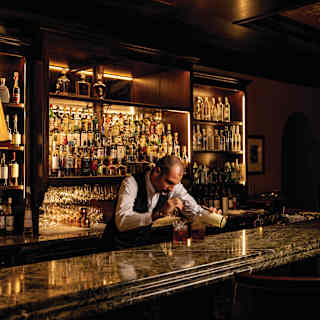Luchino Visconti’s Tuscany
Luchino Visconti’s Tuscany
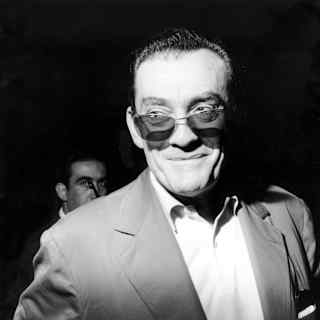
In the 1960s, Castello di Casole in Tuscany was a playground for one of the Italian film industry’s biggest disruptors. Film writer and historian Christina Newland, programmer of ‘Luchino Visconti: Decadence & Decay’ at the British Film Institute, explores the story of the Visconti brothers – their legendary parties, the glittering guestlists and the bar that honours them today.
As a honey-hued castle once owned by aristocratic brothers during the creative wellspring of mid-century dolce vita, Tuscany’s Castello di Casole still exudes the kind of Italian luxury that can only emerge from starry cinema legend. It is a place enriched by the legacy of lustrous stars of stage and screen, invited to this lavish party spot and salon-like space for like-minded, decadent creatives.
Their host, the maestro of hedonism in this era, was the one and only Count Luchino Visconti di Modrone. A dashing, maverick film director, he had made a splash with his first feature, the sultry Ossessione, back in 1942. By the early 1960s he'd made a slew of operatic masterpieces that are now canonical Italian movies, including perhaps his finest achievement, The Leopard from 1963, a luxuriant depiction of the 19th-century Sicilian aristocracy in decay featuring Claudia Cardinale. Behind the camera, Visconti was trim, fashionably black-clad and a lover of costume, opera, literature and perfume. A man of exquisite taste, he helped popularise Louis Vuitton luggage when he lived in Paris in the 1930s (he loved that he shared the initials) and directed operas between his film work, most notably for Maria Callas.
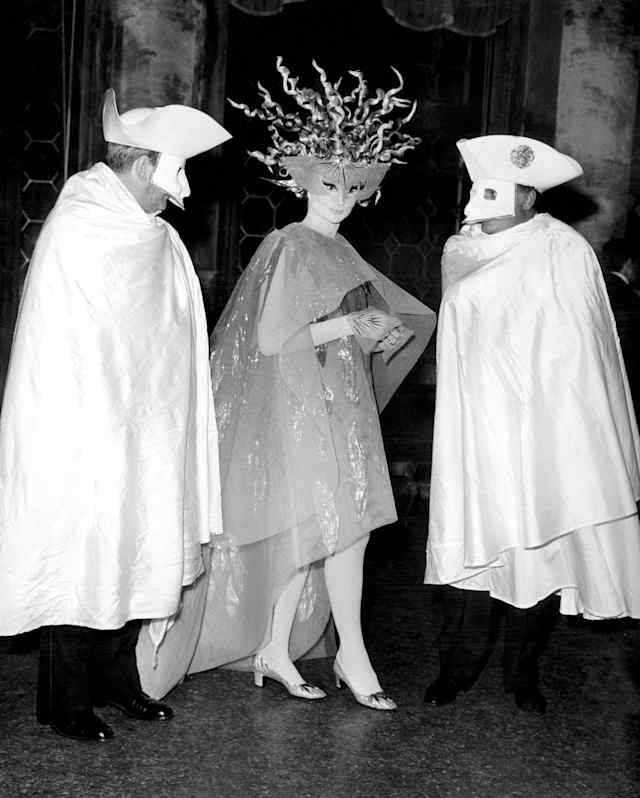
Luchino Visconti at a costume party with Viscountess Jacqueline of Ribes and actor Franco Rosi, 1967.
His younger brother by two years – less in the spotlight than Luchino – was Earl Edoardo Visconti. The pair hailed from one of the oldest Milanese aristocratic families; so powerful were their forebears that you can find the family name and crest at various major landmarks in the city, including at the majestic spires of Il Duomo. It could be said that building, designing and capturing beauty was practically in the Luchino family DNA, so it’s hardly a surprise that Castello di Casole – located in-between San Gimignano and Siena in the beautiful Tuscan countryside – soon caught Edoardo’s eye, becoming his holiday home in the late 1950s. The original site dates to Etruscan times – some 2500 years ago – and is perched atop the high rolling hills of the region, boasting beguiling, lush views of olive groves and landscapes beyond.
It was here, at the height of international fame and success, that Luchino Visconti and his starry entourage of friends and lovers would gather in his brother’s Tuscan home to let their impeccably coiffed hair down. Party guests included luminaries like Sophia Loren, Burt Lancaster, Helmut Berger and many more. Leaning into the noble decadence that was practically family tradition, the brothers were astoundingly particular on the details: fresh flowers for each room, starched luxury cotton pyjamas for their guests and stacks of vintage champagne and wine to keep everyone sated. In the sartorial, culinary and hospitality stakes, to be a guest of the Visconti brothers at Castello di Casole was to be treated as royalty. Given the brothers’ upbringing, it only makes sense: Edoardo, like his older brother, was an admirer of art, culture and music, and the pair grew up in a village built by their own aristocratic father, flanked by a coterie of tutors and servants.
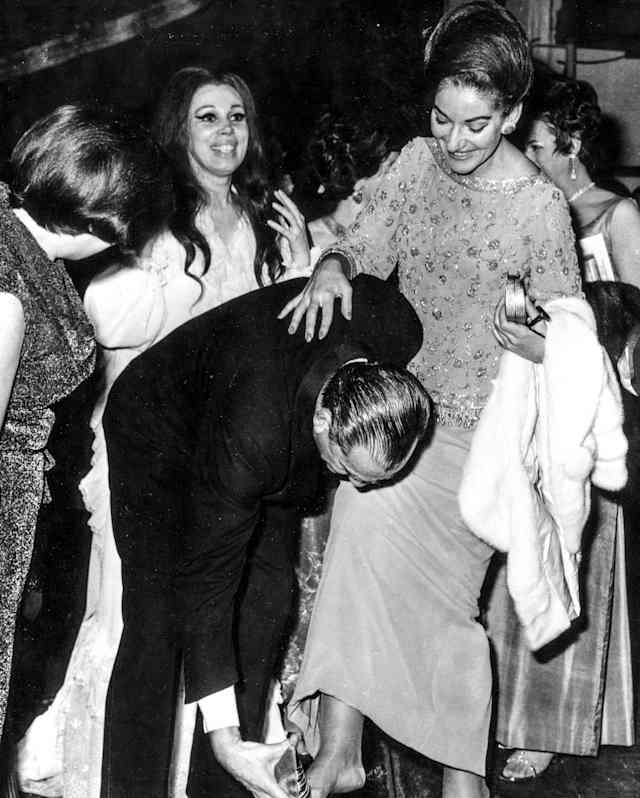
Luchino Visconti helps Maria Callas with her shoe at an event in 1967.
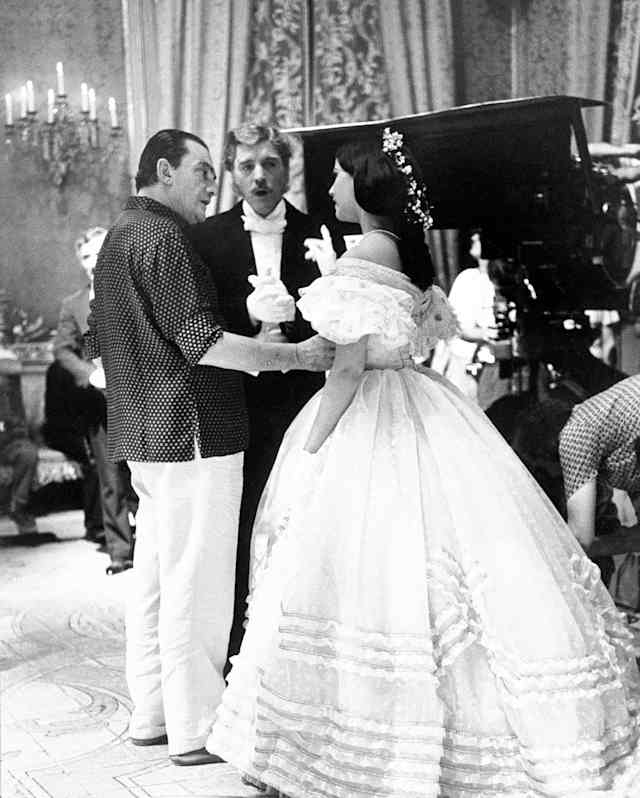
Luchino Visconti directing Burt Lancaster and Claudia Cardinale on the set of The Leopard, 1963.

Luchino Visconti taking a break on the set of the film Sandra in 1965.
Today, as a luxury hotel in Tuscany helmed by Belmond, Castello di Casole's Bar Visconti pays tribute to this hedonistic yet cultured past, serving fine wines and spirits while surrounded by framed stills from Visconti’s various film works. He took inspiration from the gorgeous views of the Tuscan countryside, and with the hotel's palatial but rural surroundings – with a farm, a medieval village and an Etruscan-era wine cellar – it was a place that allowed him to relax and write, far away from the frenzy of the Roman film industry. The peaceful environs of Castello di Casole remain a place to hole up, explore the farms and gardens and get acquainted with wildlife, or, indeed, to kick off your Ferragamos and have a party.
In Visconti’s The Leopard, the film culminates in an unforgettably sumptuous, detailed ballroom sequence at a lavish 19th-century home. It is positively bursting with baroque gowns and intricate palatial rooms, designed so meticulously by Visconti that he even sourced era-appropriate items to be placed in drawers that would remain unopened onscreen. As the last drunken stragglers are making their way to the door – not without their freshly-brewed coffee handed over by servants on the way out – it’s practically dawn. At Castello di Casole, Visconti's parties may have been a scene updated for the hip, cinema-crazy 1960s – more miniskirts than hoopskirts – but it was where the director led his own real-life ball, strictly invitation-only and with no less of an eye for the details.
Heade image credit: © AGIP / Bridgeman Images. Center image: Farabola / Bridgeman Images. Trio of images: Entertainment Pictures /SNAP, United Archives GmbH, Universal Images Group North America LLC.
BAR VISCONTI
At Bar Visconti, aristocratic history and Hollywood glamour combine to create a stylish setting for cocktails. Step inside and peruse a menu of snacks and rare liquors, including a selection of grappas and Tuscan gins.
